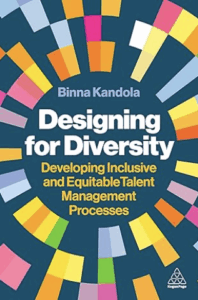Diversity/Gender
Published on July 24, 2025
Book Reviews: Diversity and Gender in Tech Comm

Diversity’s Promise for Higher Education: Making It Work, 4th ed.
Daryl G. Smith. John Hopkins University Press. 2024. 408 pages.
Index Terms—DEI, higher education, institutional effectiveness.
Reviewed by Nicole St. Germaine, Professor, Natalie Z. Ryan Department of English, Angelo State University
Few topics have generated more controversy in higher education than the topic of diversity, equity, and inclusion (DEI). While many states and college campuses embrace DEI and make it the centerpiece of their recruitment efforts, other states, such as Texas, are pulling back and even closing their DEI offices. Daryl G. Smith’s Diversity’s Promise for Higher Education: Making It Work seeks to persuade academics and university administration that diversity isn’t just desirable on college campuses; it is essential to the survival of the academy and to society.
Smith makes the case throughout the book that DEI is not a liberal political agenda: it is about “effective institutions, academic excellence, good science, and higher education’s role in preparing leaders of all backgrounds for their work in a diverse society” (p. 3). To this end, the book is divided into four parts: Part 1 explains the “diversity imperative;” Part 2 is focused on explaining why diversity, like technology, is an integral part of our society; Part 3 focuses on how diversity works to maximize talent and resources; and Part 4 explains what the academy must do to fulfill our role in preparing students for their eventual roles in our pluralistic democracy.
Data analysis is the greatest strength of Diversity’s Promise for Higher Education. Smith doesn’t use case studies and individual vignettes to make his case, instead, he drives the discussion by data drawn from sources such as college admissions, federal financial aid information, and labor statistics. Smith disaggregates this data and explains its implications to make a compelling case for DEI initiatives.
The one criticism that I have is that Smith focuses almost exclusively on diversity in race, ethnicity, and gender. Smith can be excused to some extent for neglecting to provide a thorough discourse on the politics of gender identity in higher education, which more recently came to the academy’s attention. However, I wonder why the topics of disability, sexual orientation, and religious diversity were not addressed in more detail. I can only hope that later editions will provide the same rich data and discussion about these topics within DEI.
Diversity’s Promise for Higher Education should be essential reading not only for college administrators, but also for professors, advisors, and anyone in a decision-making capacity in higher education. As Smith points out frequently within the text, the real DEI work doesn’t just happen in the University President’s office: it happens in the classroom, in the admissions office, and anywhere decisions about students are made.
Designing for Diversity: Developing Inclusive and Equitable Talent Management Processes
Binna Kandola. New York, NY: Kogan Page Inc. 2025. 176 pages, including index.
Index Terms: diversity, inclusion, leadership
Reviewed by Siobhan Patterson, Communications Consultant (skgehrs@gmail.com).
Designing for Diversity: Developing Inclusive and Equitable Talent Management Processes encourages readers to reflect on and challenge stereotypes in everyday life. Binna Kandola looks at each part of the talent spectrum in his research from new hires to executive leaders. In his writing, he includes considerations regarding women, people of color, members of the LGBTQ+ community, and those with disabilities.
A section that I gravitated toward was a story Kandola shared from a senior female leader he knew. He introduced the Leadership Categorization Theory in which the concepts include how we have “preconceived ideas of what a leader looks like and what constitutes effective leadership” and how these ideas influence how the leader is scrutinized (p. 96). After providing the theory, he then shared this woman’s experience riding in an elevator with two males from the office. These men were commenting on rumors they had heard about their new female leader not realizing she was the one in the elevator with them. Kandola then discusses how our personal expectation for a leader affects how we communicate and collaborate with that individual.
Designing for Diversity would have been a stronger read if it included more testimonials or experiential representation, such as this example. The book is primarily research-based, providing useful statistics and context; however, the added voices would emphasize these findings and provide examples from today.
Kandola did share his experience presenting a list of twelve actions for an engineering firm. These actions were designed to help them better understand how unconscious bias and preconceived notions play a role in project planning and hiring. They were encouraged to identify which from the list they could actively implement in a meaningful way without rushing to mark the list complete. A few suggestions included attending employee resource group events as an active listener, conducting a network analysis to identify how people are included in collaborative projects, and requiring a diverse panel of interviewers during the hiring process.
One common theme throughout his writing is to ensure that we’re doing the work and listening to other communities. It’s one thing to invest thousands of dollars into the marketing and branding of diversity programs, but it’s another to ensure these programs are managed with intentionality and purpose. We need to ensure that people are given the tools and support necessary by investing in career development and training opportunities. Each day we can find smalls ways to be more welcoming and inclusive while creating ways to celebrate each person’s contribution to our collective success.


